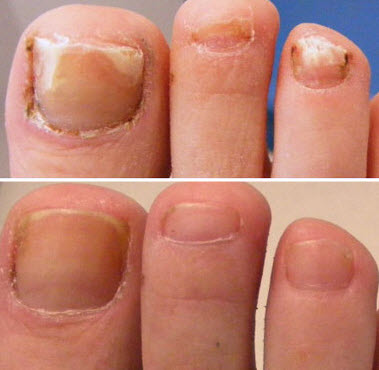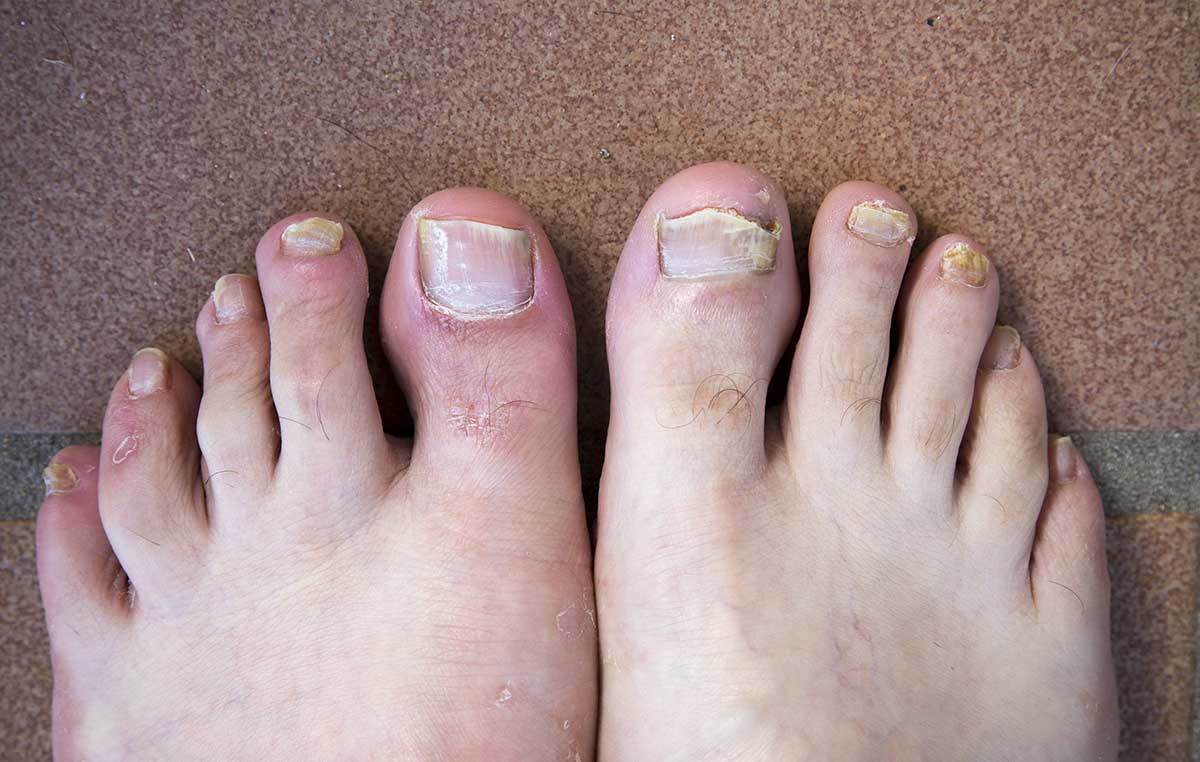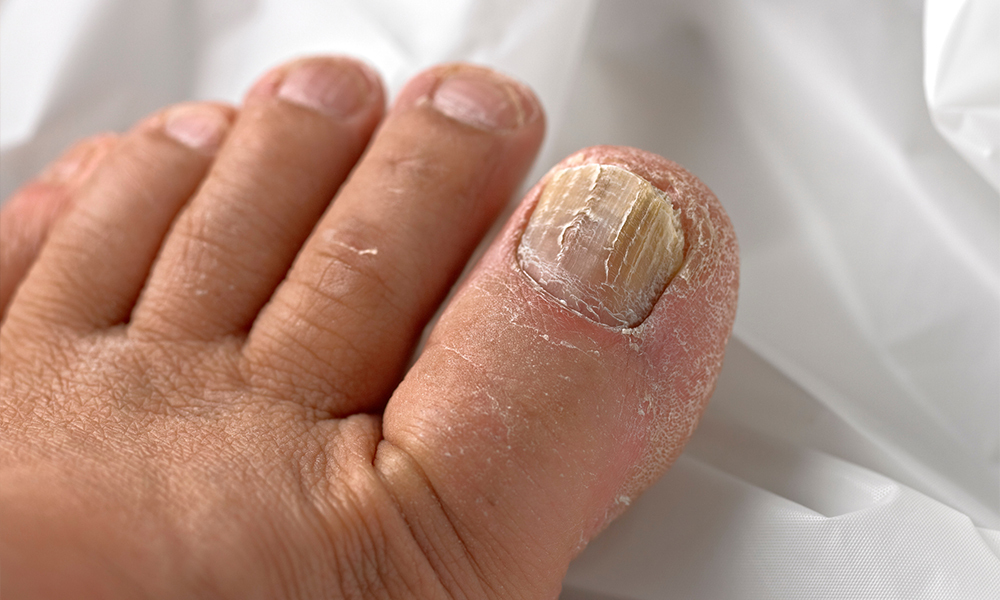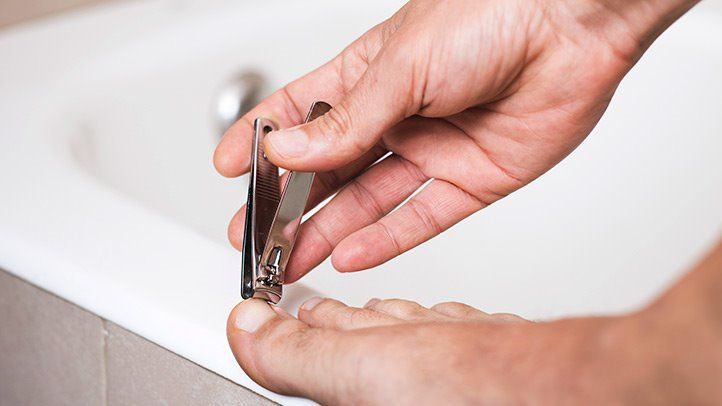Introduction

Nail fungus, also known as onychomycosis, is a common fungal infection that affects the nails. It is estimated that up to 14% of the general population may have a fungal nail infection. While most cases of nail fungus are not serious, they can be bothersome for some individuals due to the appearance of the infected nails. In addition, there is often a misconception about whether nail fungus causes pain. This article aims to provide an understanding of the symptoms of nail fungus, the pain and discomfort associated with it, and the potential complications if left untreated.
Overview Of Nail Fungus And Its Impact On Health
Nail fungus, also known as onychomycosis, is a common fungal infection that primarily affects the nails. It is caused by various types of fungi, including dermatophytes and yeast. While nail fungus is not usually a serious health issue, it can have significant impacts on an individual’s quality of life. The infected nails can become discolored, thickened, and brittle, leading to embarrassment and self-consciousness. If left untreated, nail fungus can cause pain, discomfort, and potentially lead to permanent nail damage. Additionally, individuals with suppressed immune systems or underlying health conditions may be at a higher risk of developing severe infections. It is important to promptly seek treatment to prevent further complications and restore nail health.
Common Misconceptions About Nail Fungus Pain
One common misconception about nail fungus pain is that it is always severe and unbearable. However, the reality is that nail fungus infections usually do not cause intense pain. While discomfort and sensitivity may be experienced, severe pain is not typically associated with nail fungus. Another misconception is that the pain indicates a more serious infection. In most cases, the pain associated with nail fungus is a result of inflammation and irritation rather than a sign of a severe underlying condition. It is important to consult with a healthcare professional to accurately diagnose and treat nail fungus infections.
Symptoms Of Nail Fungus

Symptoms of nail fungus can vary, but the most common signs include discoloration and thickening of the nail. The infected nail may appear yellow, brown, or white and may become distorted in shape. In some cases, the nail may become brittle and crumbly, making it difficult to trim. Pain or discomfort may also be experienced, especially when pressure is applied to the affected toe or finger. If you notice any of these symptoms, it is important to seek medical attention for proper diagnosis and treatment.
Discoloration And Thickening Of The Nail
Discoloration and thickening of the nail are common symptoms of nail fungus. The infected nail may appear yellow, brown, or white and may become distorted in shape. As the fungal infection progresses, the nail may thicken and become brittle, making it difficult to trim. These changes in the nail’s appearance and texture can be a cause of concern and discomfort. It is important to seek medical attention for proper diagnosis and treatment to prevent further complications. Regular monitoring and treatment can help manage the symptoms and improve the appearance of the affected nail.
Brittle And Distorted Nail Shape
Brittle and distorted nail shape is another common symptom of nail fungus. As the fungal infection progresses, the affected nail may become brittle and prone to cracking or breaking. The shape of the nail may also become distorted, with irregular edges or ridges. This can make it difficult to trim the nail and can cause discomfort when walking or using the affected finger. It is important to seek treatment for nail fungus to prevent further damage to the nail and alleviate any pain or discomfort.
Pain And Discomfort Associated With Nail Fungus

Pain and discomfort are common symptoms associated with nail fungus infections. Individuals may experience various sensations, including throbbing, itching, or a dull ache in the affected nail area. These sensations can be exacerbated by factors such as pressure from footwear or activities that put strain on the nails. The discomfort can impact daily activities and cause difficulty in walking or using the affected finger. Seeking treatment for nail fungus is essential to alleviate pain and discomfort and prevent further complications.
Possible Sensations Experienced With Nail Fungus
Individuals with nail fungus may experience various sensations in the affected area. These sensations can include throbbing, itching, and a dull ache. The discomfort may worsen when pressure is applied, such as wearing tight-fitting footwear or participating in activities that put strain on the nails. These sensations can affect daily activities and make walking or using the affected finger difficult. Seeking treatment for nail fungus is crucial to alleviate pain and discomfort and prevent further complications.
Factors That Can Aggravate Pain
Factors that can aggravate pain associated with nail fungus include certain lifestyle and environmental factors. Wearing tight-fitting shoes or shoes that do not provide proper ventilation can worsen the discomfort. Engaging in activities that put pressure on the nails, such as running or participating in sports, can also exacerbate the pain. Additionally, poor foot hygiene, such as not keeping the feet clean and dry, can contribute to the growth and spread of nail fungus, leading to increased pain and discomfort. It is important to address these factors to manage and alleviate pain effectively.
Complications And Risks

Complications and Risks associated with nail fungus can arise if the infection is left untreated. The fungus can spread to other nails, leading to multiple infected nails and increasing the severity of symptoms. In some cases, the infection can cause permanent damage to the nails, such as nail distortion or permanent thickening and discoloration. If the skin around the infected nail becomes damaged, it can also create a gateway for bacterial infections. Additionally, nail fungus can impact daily activities and affect the quality of life due to pain, discomfort, and embarrassment. Early detection and proper treatment can help prevent these complications.
Potential Complications If Nail Fungus Is Left Untreated
If left untreated, nail fungus can lead to potential complications. The infection can spread to other nails, increasing the severity of symptoms and causing multiple infected nails. It can also cause permanent damage to the nails, resulting in nail distortion, thickening, and discoloration. Moreover, the damaged skin around the infected nail can pave the way for bacterial infections. Furthermore, nail fungus can significantly impact daily activities and quality of life due to pain, discomfort, and embarrassment. Early detection and proper treatment are important to prevent these complications and minimize the risks associated with nail fungus.
Impact On Daily Activities And Quality Of Life
Nail fungus can have a significant impact on daily activities and overall quality of life. The discomfort and pain associated with the infection can make it difficult to perform everyday tasks such as walking, standing, or wearing shoes comfortably. In addition, the appearance of infected nails can cause embarrassment and self-consciousness, leading to a decrease in self-esteem and social interactions. The limitations caused by nail fungus can also affect work productivity and participation in recreational activities. Seeking early treatment and taking preventive measures can help minimize these impacts and improve daily functioning and quality of life.
Treatment Options

Treatment options for nail fungus include topical antifungal medications and oral antifungal medications. Topical treatments are applied directly to the affected nail and surrounding skin to kill the fungus. They are available as creams, gels, or nail lacquers. Oral antifungal medications are taken by mouth and work from within to eliminate the fungal infection. However, they may have potential side effects, and consultation with a healthcare professional is recommended. It is important to follow the prescribed treatment regimen consistently for successful management of nail fungus.
Topical Antifungal Medications
Topical antifungal medications are a common treatment option for nail fungus. These medications are applied directly to the affected nail and surrounding skin, targeting the fungus at its source. They are available in the form of creams, gels, or nail lacquers. Topical treatments are effective in killing the fungus and promoting healthy nail growth. It is important to follow the prescribed treatment regimen consistently for successful management of nail fungus. However, it may take several months for the nail to fully recover. Consultation with a healthcare professional is recommended to determine the most suitable medication for individual needs.
Oral Antifungal Medications And Their Potential Side Effects
Oral antifungal medications are another treatment option for nail fungus. These medications work by targeting the fungus systemically and can be more effective for severe or persistent cases. However, they do come with potential side effects. Some common side effects of oral antifungal medications include headaches, upset stomach, and skin rash. In rare cases, these medications can also cause liver damage, so regular monitoring of liver function is necessary. It’s important to discuss the potential risks and benefits with a healthcare professional before starting oral antifungal treatment.
Prevention And Management

To prevent nail fungus infections, it is important to practice good foot hygiene. This includes keeping the feet clean and dry, wearing breathable socks and shoes, and avoiding walking barefoot in public areas. Additionally, it is recommended to trim nails regularly, avoid sharing nail clippers or files, and disinfecting nail tools after use. If you suspect a fungal infection, promptly seek treatment to prevent its spread and recurrence. In terms of management, self-care strategies such as keeping nails trimmed and clean, using antifungal ointments, and wearing breathable footwear can help manage symptoms and reduce pain. Regularly consulting with a healthcare professional is crucial for proper diagnosis and treatment.
Tips To Prevent Nail Fungus Infections
To prevent nail fungus infections, individuals should follow these tips:
- Keep the feet clean and dry: Regularly wash and thoroughly dry the feet, especially between the toes, to prevent moisture build-up that can promote fungal growth.
- Wear breathable socks and shoes: Opt for breathable materials like cotton or moisture-wicking socks and well-ventilated shoes to allow air circulation and reduce sweat accumulation.
- Avoid walking barefoot in public areas: Use shower shoes or sandals in public showers, pools, and locker rooms to minimize the risk of picking up fungal infections.
- Trim nails regularly: Keep nails short and trim them straight across to prevent dirt and fungi from accumulating under the nail bed.
- Do not share nail clippers or files: Sharing these tools increases the likelihood of spreading fungal infections.
- Disinfect nail tools: Clean and disinfect nail clippers, files, and other tools regularly to eliminate any potential fungus or bacteria.
- Choose reputable nail salons: Ensure that nail salons follow proper sanitization practices to reduce the risk of fungal infection transmission.
Following these preventive measures can significantly reduce the risk of nail fungus infections.
Self-care Strategies To Manage Symptoms And Reduce Pain
Individuals can employ self-care strategies to manage the symptoms and reduce pain associated with nail fungus infections. Here are some tips:
- Keep the affected nails clean and dry, avoiding excessive moisture.
- Apply over-the-counter antifungal creams or ointments as directed.
- Use medicated nail polish or solutions to treat the infection.
- Trim and file the affected nails regularly to reduce thickness and discomfort.
- Avoid wearing tight footwear or shoes that trap moisture.
- Maintain good overall foot hygiene and avoid sharing personal items like socks and shoes.
By following these self-care strategies, individuals can alleviate symptoms and promote healing of the affected nails.
Frequently Asked Questions – Can a Nail Bed Grow Back?
Q: What is a nail bed?
A: The nail bed refers to the tissue located beneath the nail plate. It helps support and nourish the growth of the nail.
Q: Can a nail bed be damaged or injured?
A: Yes, a nail bed can be damaged due to trauma, severe nail biting, infections, or certain medical conditions.
Q: Can a nail bed grow back if it has been damaged?
A: In most cases, if the nail bed is damaged or partially removed, it will not grow back on its own. However, with proper care and treatment, it is possible to encourage the skin and tissue to regenerate, facilitating nail regrowth.
Q: What can I do to help my nail bed heal and promote regrowth?
A: Following these tips may aid in the healing process and support the regrowth of your nail bed:
- Keep the affected area clean and free from infection.
- Avoid biting or picking at the nails to prevent further damage.
- Protect the damaged nail bed by using a bandage or protective cover when necessary.
- Maintain a healthy diet to ensure proper nutrition.
- Avoid or limit exposure to harsh chemicals and excessive moisture, as these can slow down healing.
- Consult a healthcare professional for guidance on specific treatments or medications that may aid in healing and regrowth.
Q: Are there any medical treatments available for damaged nail beds?
A: Yes, depending on the severity of the damage, a healthcare professional may suggest medical interventions such as surgical repair, skin grafts, or the use of topical medications to help stimulate nail bed regeneration. It is advisable to consult with a healthcare expert for an accurate diagnosis and appropriate treatment options.
Q: How long does it take for a nail bed to heal and regrow a new nail?
A: The healing time and nail regrowth can vary based on the severity of the injury, overall health, and individual factors. It can take several weeks to a few months for a new nail to grow completely.
Q: Are there any complications or risks associated with damaged nail beds?
A: If a damaged nail bed is not properly treated or cared for, there is a risk of infection, deformity of the nail, or irregular regrowth. Additionally, underlying medical conditions may affect the healing process. Seeking timely medical attention and following recommended care instructions can help reduce these risks.
Remember, the information provided here is for general guidance purposes. It is essential to consult a healthcare professional for personalized advice regarding your specific condition and treatment options.

I am proud to offer non-toxic beauty options. The gel polishes I offer are “9-Free”, free of nine of the most commonly found allergens and toxic chemicals in nail polish, and cruelty-free, vegan, and HEMA-free. The nail lacquers I offer range between “7-Free” and “16+-Free” and are also cruelty-free and vegan.